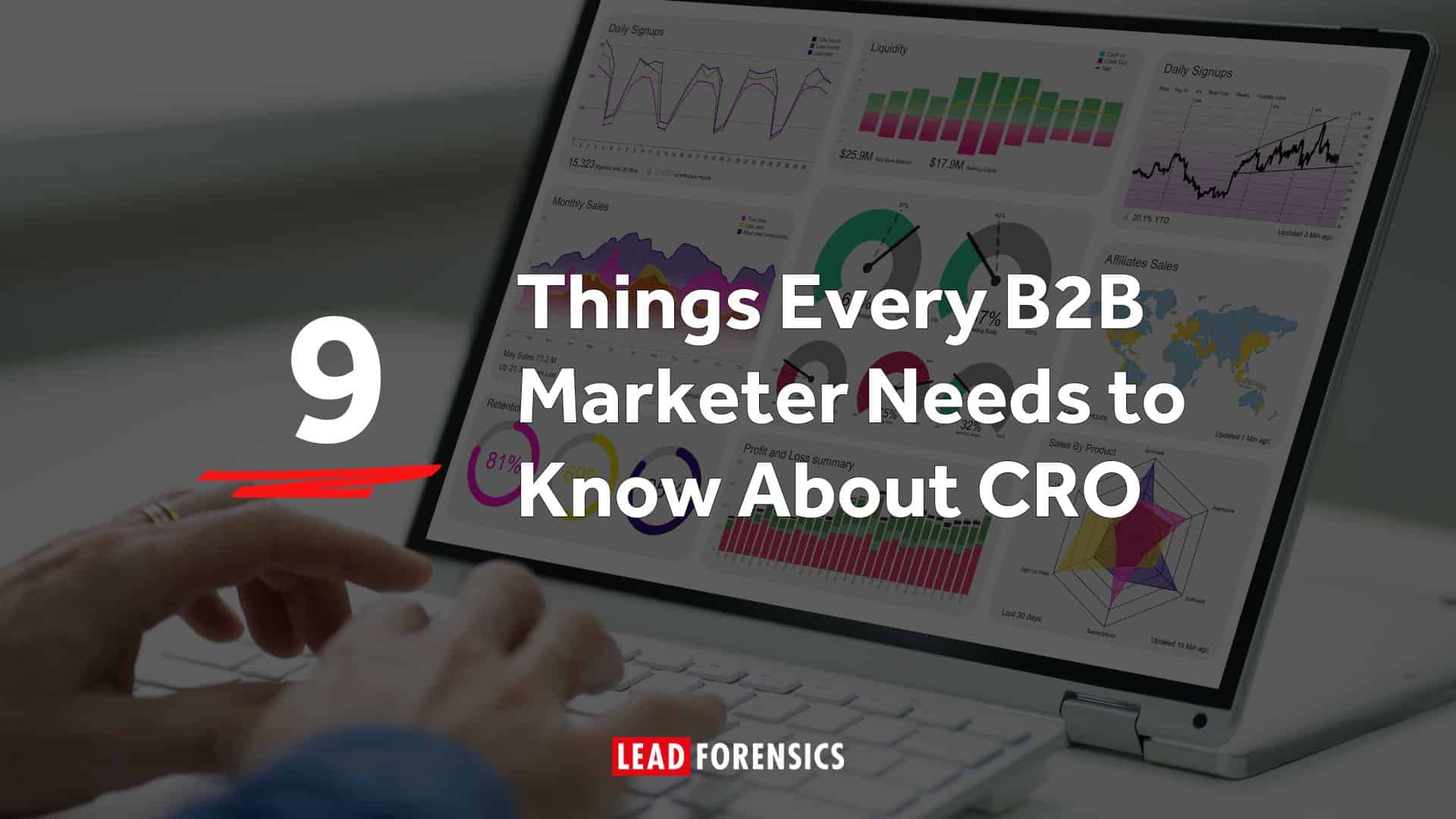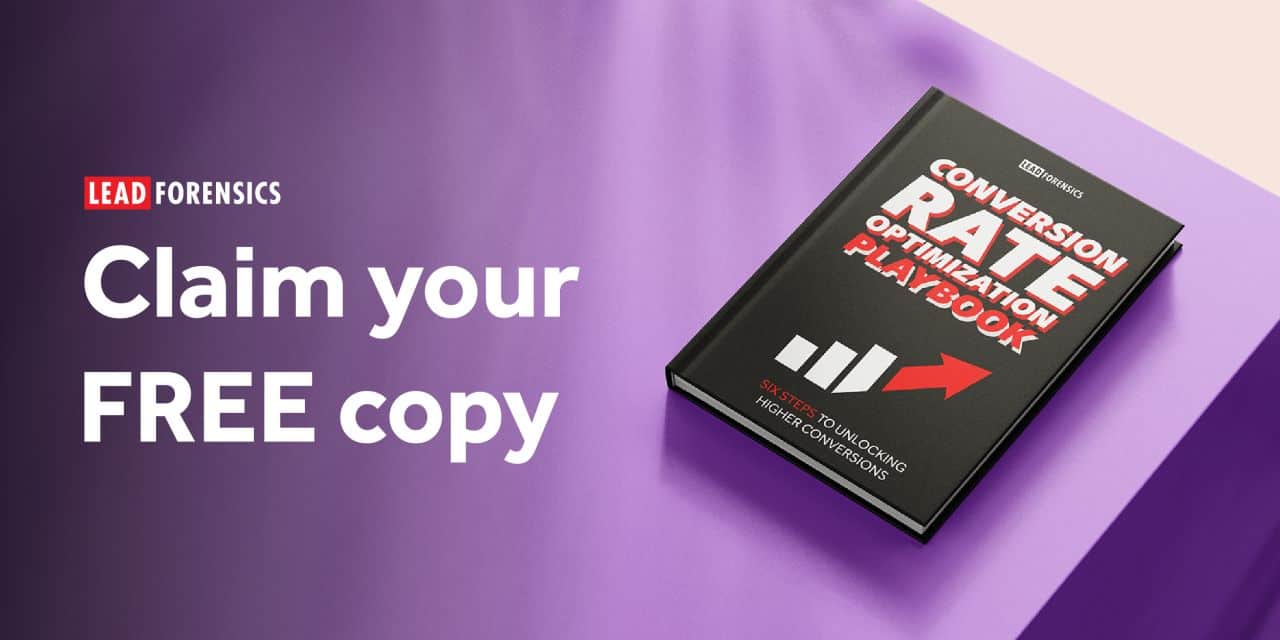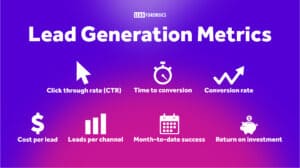It’s a strategy worth pursuing. After all, it’s what can help you turbo-charge your lead generation.
But when you embrace CRO, you also cultivate a culture of continuous improvement. In turn, this fosters a mindset of innovation and agility that will help your B2B brand really stand out.
In a recent webinar, Lead Forensics CMO Kirsty Dawe was joined by Hayley Carpenter, Founder of CRO agency Chirpy, to discuss conversion rate optimization and the key things that every B2B marketer needs to be aware of.
1. CRO Is for Every Business, But Not in the Same Way
CRO isn’t just for e-commerce. Every business, including B2B, can benefit from improving their conversion rates. The key is understanding what level of CRO is appropriate based on your data volume and business model.
If your B2B website is niche and you have low traffic volumes, you might struggle. That’s because it’s hard to run a CRO test when there isn’t enough volume to reach statistical significance during your experiment.
But for B2B sites that get enough traffic, it’s time to start thinking about what you could test to see if you can get more conversions. If you’re stuck for inspiration, it can help to consider some quick wins or look at CRO stats to see what’s worked for others.
2. CRO Is a System, Not a Set of Hacks
Effective CRO is not about random experiments or gut-feel changes. It’s a systematic, repeatable process that includes:
- Research
- Ideation
- Prioritization
- Testing
- Analysis
You should treat conversion rate optimization like a product development cycle, not a marketing campaign. If you can, build your own CRO playbook to document your process and make sure you consider how to turn this into an area of continuous improvement.
3. Research Is Non-Negotiable
When it comes to identifying your key conversions, many companies rely solely on analytics and miss out on the full picture.
To think about conversion rate optimization properly, your research needs to include both quantitative and qualitative research methods. The typical tools you might use include:
- Heatmaps and session recordings
- User testing (moderated and unmoderated)
- Customer interviews
- Journey mapping
- Social listening and review scraping
As a B2B marketer, it’s important you don’t just look at what users do but try to understand why they do it.
4. Qualitative Data Can Be Quantified
To see how effective your CRO efforts are, you need to measure everything. But how can you do this when you’ve got so much qualitative data?
The answer is to turn your qualitative insights into quantitative data.
For example, you can assign a code or a label to topics or themes and count how many times it’s mentioned. If eight people say your website navigation is confusing, you would see that referenced eight times.
This allows you to spot patterns in user feedback and prioritize issues based on frequency of mention.
Plus, being able to represent this kind of data in a quantitative way makes it easier to present your findings in a format that resonates with stakeholders.
5. Measure What Matters: Bottom-Line Metrics
Another essential thing that B2B marketers need to understand about CRO is that while looking at metrics like button clicks of video views are signs of engagement, it’s the bottom-line numbers you need to focus on.
When measuring the impact of changes on conversions, you should focus on:
- Leads
- MQLs/SQLs
- Transactions or demos booked
- Revenue
If you’re unsure of what metrics to focus on, it can help to ask yourself: “does this tie back to revenue or meaningful conversions?” If it doesn’t, it’s not what you should be focused on.
6. Forecasting CRO Results Is Misleading
Before you start your conversion rate optimization project, you might be asked to forecast the impact of the work. But this is often based on guesswork rather than reliable models.
It’s really difficult to predict exact revenue gains from a test. And if you do make a prediction, it can be misleading.
The best thing to focus on is the real-time test results, alongside long-term trends.
You may need to undertake an education piece with stakeholders to explain why you can’t reliably forecast, but it’ll be worth the effort when you’re spared from having to commit to figures you know you can’t trust.
7. CRO Requires Cultural Buy-In
Your organizational mindset is jut as important as the tools and tactics you have at your disposal. That’s because CRO is a long-term investment, and so you need to have proper buy-in from the business.
What does that look like?
It means teams that can embrace ambiguity, allow room for failure, have the patience to wait for experimentation results, and are willing to reiterate on successes.
And because CRO cuts across marketing, product, customer success and beyond, collaboration is an essential element.
8. Expertise Matters More Than Tools
When you work in such a multidisciplinary field, experience pays dividends. CRO blends data, UX, psychology, experimentation, data analysis, design, copywriting and more, so it needs an experienced pair of hands to manage it well.
The outcome depends more on the expertise of the person looking into your conversions than the tools you use.
9. Patience Is a Competitive Advantage
If you’ve tried CRO before, you’ll know it doesn’t always deliver instant wins. Some tests will fail, and some insights will take a while to surface.
Don’t abandon CRO because early results are slow. If you can trust the process, the results will follow. After all, you’ve made those decisions based on your research and data, so there’s a reason why it’s a good thing to test.
You can replay the full webinar – How to Drive Growth With Strategic Conversion Rate Optimization – here.
Want More CRO Tips?
Take a look at our Conversion Rate Optimization Playbook. It outlines the full process and showcases how other companies have seen success through small tweaks.










